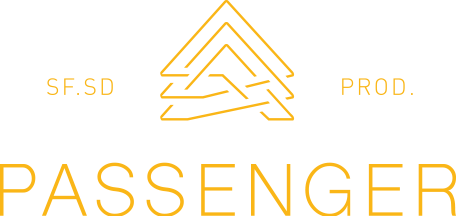Behind-the-Scenes Breakdown: First Peoples Fund
First Peoples Fund empowers Lakota, Dakota, Nakota and Ojibwe artists through a combination of financial support, mentoring, and entrepreneurship opportunities. This approach empowers Native artists to be culture bearers and leaders of social change in their communities.
Of course, being told what First Peoples Fund does is different from seeing what First Peoples Fund does. Which is why it was so important that director Wes Eisenhauer capture the First Peoples Fund story in a memorable way.
To go into a little more detail about the making of this piece, we took some time to talk with both Wes and Passenger’s Joe Hubers. Here’s what they had to say.
There are a lot of different storylines throughout this piece—how did you guys incorporate all of them without letting it feel long & bloated or losing the overall focus?
Joe: I think Wes did a great job of honing in on the key points and having each piece of the puzzle hand off from one aspect to the next in these different voices. He walked that line very well.
Wes: In the interviews we did prior to going out and doing production, a consistent thing that came up in our conversations that I wanted to highlight was the idea of students becoming the teachers...that cyclical part of their organization and their culture. I thought it was great that when someone enters the organization, they go through it, and then in turn they use their experience and knowledge to help the next group of people.
What surprised you about this piece?
Joe: Just from my perspective, this was the first solo piece that Wes finished and released, and I was curious to see how he’d handle it. And I was really impressed by both his professional demeanor and how he pursued it creatively. He drilled down the story and found the best way to tell it.
I think that was an example of good communication working well. Even though it was really one of his first projects, we were able to sit down and have conversations to facilitate things and work through some of the trickier parts to tell this story in the best possible way. But, overall, this was definitely his baby.
Wes: What I really found surprising was how vast the First Peoples Fund organization is. It’s not just South Dakota—they cover a huge area. I enjoyed their mindset of thinking bigger than South Dakota and working to figure out how they can propel artists outside of the reservation and into other markets. It was cool to see how they work hard to think bigger.
What aspects of this piece jumped out at you, both in terms of the story and the production itself?
Joe: One thing in particular with this one was the idea of things being cyclical. With the Lakota, part of their worldview is focused on cyclical things and this piece focused on making that full-circle connection. Wes accomplished that by starting with some of the more experienced voices and ending with this young couple showing the results of the First Peoples Fund’s efforts. The idea with the program is that you don’t just get educated—you have to become teachers within the program, and Wes did an excellent job of highlighting that.
I heard you had favorable weather when you were shooting this. Was that expected, or did the weather change your plans?
Wes: So when we shot that kind of closing scene with Scotti and Juliana, it was the last thing we did and the weather was unexpectedly beautiful. It was actually the last day of the trip. We were planning on leaving and getting back to Sioux Falls, but suddenly we found ourselves in the middle of the Badlands on a beautiful, 60 degree sunny day—in February. We just decided, “Hey, we’re here and this is an amazing opportunity.” So we ended up hiking half of the gear in our van out into the middle of a bluff in the Badlands and shooting until sunset. Which wasn’t planned at all, but we saw the opportunity to shoot a little extra, stay a little longer, and get home way later than planned...but it was definitely worth it. The whole piece wouldn’t have been the same without that lucky day of great weather.
And it’s nice that this team has the flexibility to take advantage of opportunities and adjust on the fly like that.
Wes: Absolutely. We all kind of looked at each other and said, “You know what, it’s going to be a lot more work, but let’s just go for it.” It was an opportunity we couldn’t pass up.
On a final note, the music accompaniment on all of your pieces is excellent. What goes into that decision-making process?
Wes: I honestly used my long-time collaborator in music, Corey Gerlach. He just has a folder of a lot of different instrumental tracks that could’ve been Soulcrate songs if we’d wanted them to be. I liked the idea of having something completely original for the piece that wasn’t just bought off of a music site. So anytime I can, I try to use something original. Which is nice, because I can go to him and have him tweak or edit little things and he can come right into the office to work on that with us. For First Peoples Fund, I wanted it to have more of an almost hip-hop drum beat to it, which I thought added some energy to the piece. And that’s always a struggle, to find the right music. You don’t want it to draw away from the piece and almost not notice it. You want it to complement it. And I think it worked out.
——
Needless to say, First Peoples Fund has an incredible story to tell, and Passenger certainly enjoyed helping them tell it. We’ll have more behind-the-scenes interviews to share soon.
